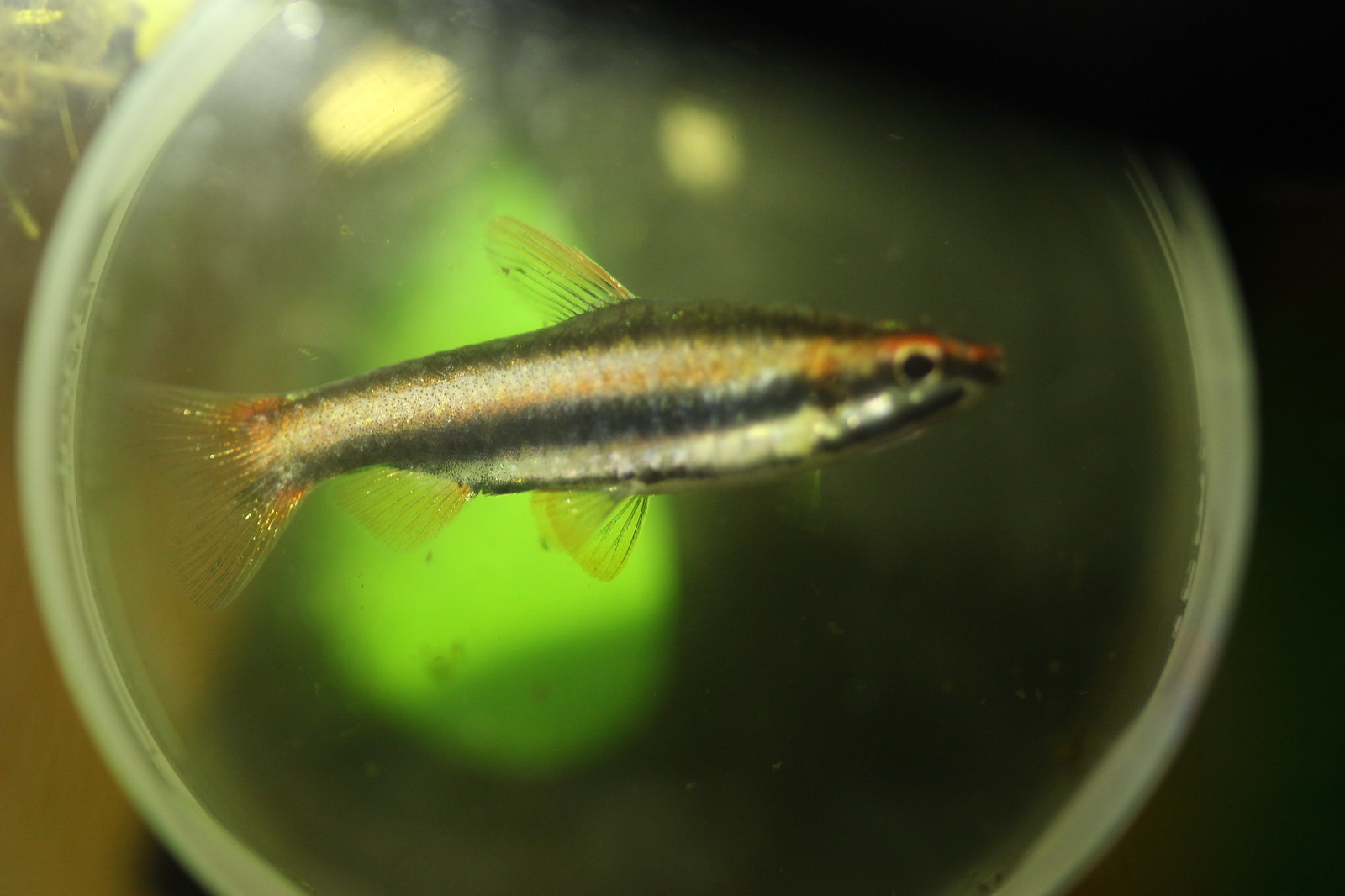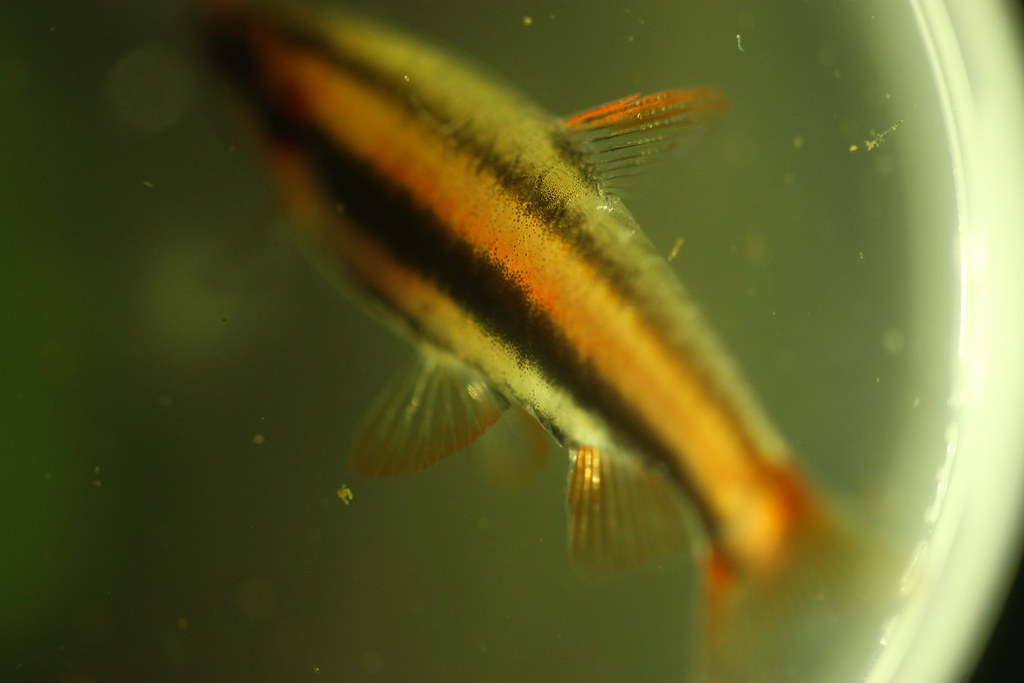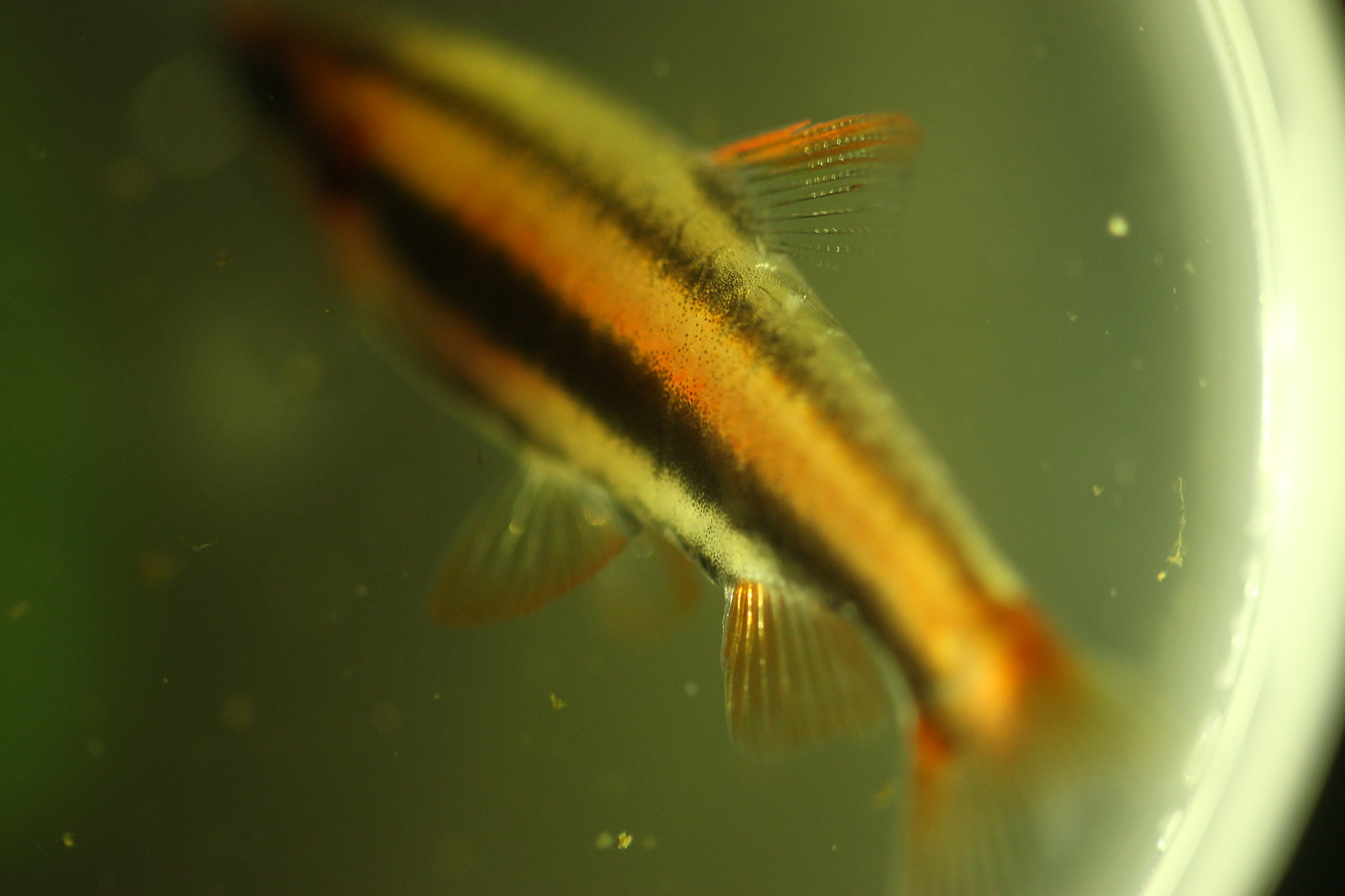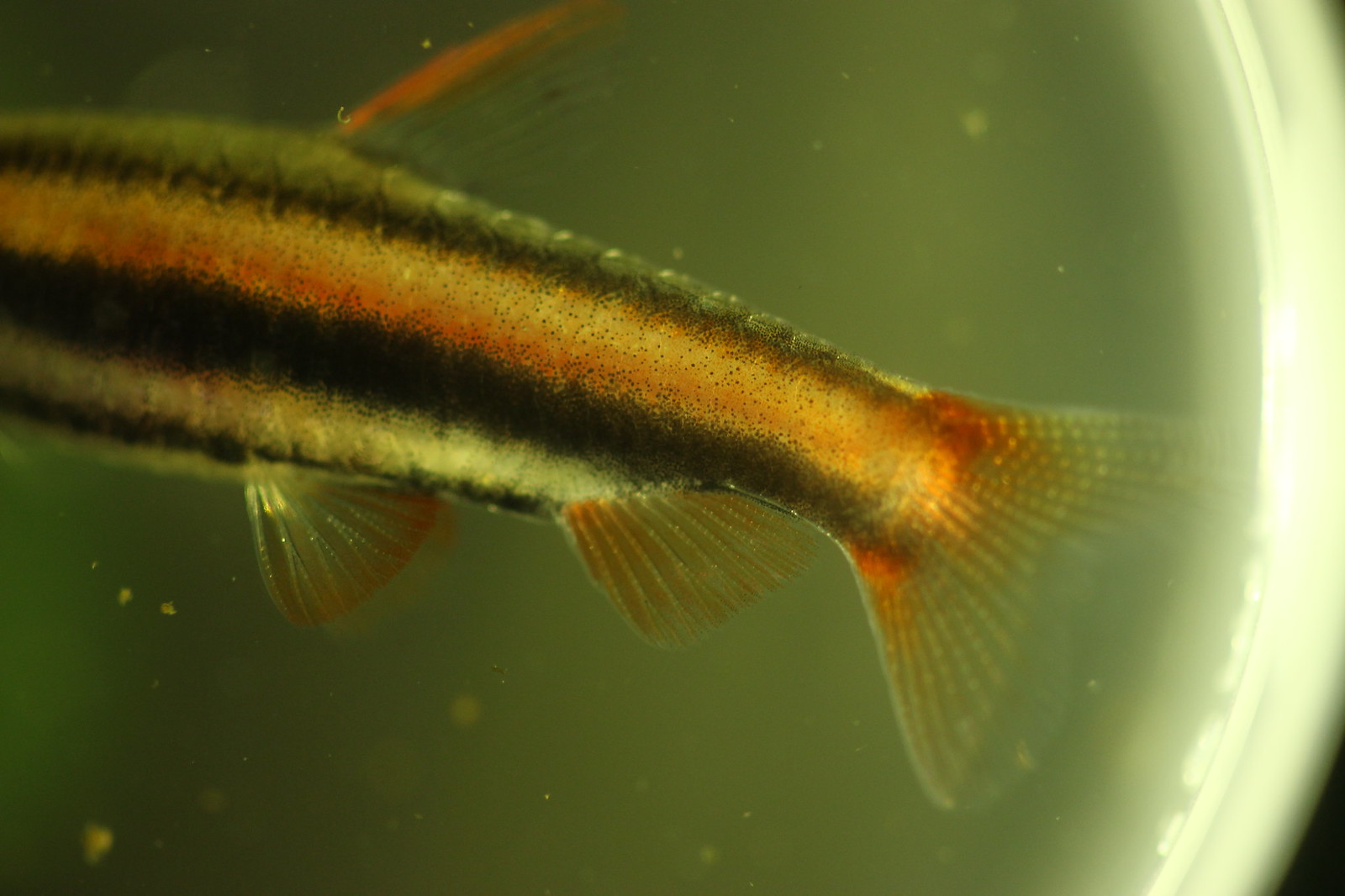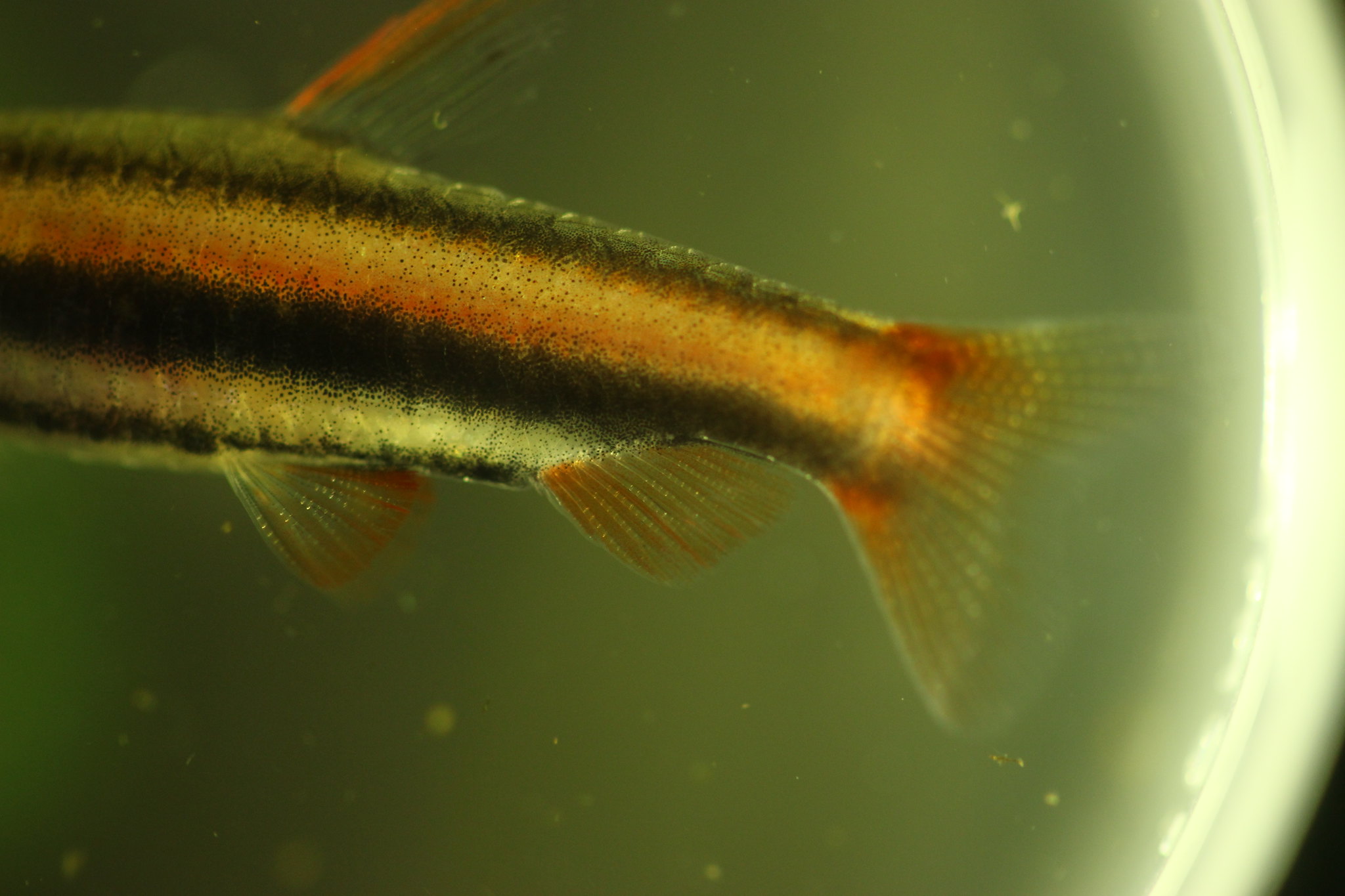- Messages
- 181
- Location
- Germany, Kassel
Hello,
I have read a few/lot of websites and book pages about Nannostomus mortenthaleri sexing and have seen some “male and female” photos too. Unfortunately, the information isn’t consistent. On Seriouslyfish website they say males should have white coloration on the dorsal fin, but no other source I could find say this and even the photo of a “pair” on their website shows a “female” with white coloration (not very bright, but still, it is there) and in Mergus Aquarien Atlas Vol. 6 it is said that the white coloration on the fins is not a way of identifying the sex of tis species.
Other sources mostly say that females don’t have much intense red coloration and that the females tend to have a less rounded, more pointy/sharp edged/tipped anal fin, just like N. marginatus and beckfordi, but much less obvious. The problem with those is, that they don’t show any actual proof with photos and when they do show “female” photos, they could just be non-dominant males.
In Mergus Aquarien Atlas Vol. 6, it is said that the females have a truly black main/middle lateral line, while males have a blue-glow on the main/middle lateral line. Again, their “female” photos contradict with that statement. The photo of the second “female” example has a very intense blue glow to “her” main/middle lateral line. Also both photos of “females” in this book has very intense red coloration to them and their anal fins are perfectly round. Does that mean females can be intensly red colored and can have rounded anal fins? Or are they just all males?
I have found this website. It shows that the male N. marginatus and N. rubrocaudatus have much wider anal fin rays than the females do. Maybe N. mortenthaleri also has this difference between males and females? Does anyone know if they do?
http://aquaria2.ru/node/5938
I have seen N. mortenthaleri fry and egg photos and even a member in this forum said that they bred the species and shared fry photos! Did you ever see or hear about sexing from such breeders? Or have seen photos of “actual females that lay eggs”?
I have read a few/lot of websites and book pages about Nannostomus mortenthaleri sexing and have seen some “male and female” photos too. Unfortunately, the information isn’t consistent. On Seriouslyfish website they say males should have white coloration on the dorsal fin, but no other source I could find say this and even the photo of a “pair” on their website shows a “female” with white coloration (not very bright, but still, it is there) and in Mergus Aquarien Atlas Vol. 6 it is said that the white coloration on the fins is not a way of identifying the sex of tis species.
Other sources mostly say that females don’t have much intense red coloration and that the females tend to have a less rounded, more pointy/sharp edged/tipped anal fin, just like N. marginatus and beckfordi, but much less obvious. The problem with those is, that they don’t show any actual proof with photos and when they do show “female” photos, they could just be non-dominant males.
In Mergus Aquarien Atlas Vol. 6, it is said that the females have a truly black main/middle lateral line, while males have a blue-glow on the main/middle lateral line. Again, their “female” photos contradict with that statement. The photo of the second “female” example has a very intense blue glow to “her” main/middle lateral line. Also both photos of “females” in this book has very intense red coloration to them and their anal fins are perfectly round. Does that mean females can be intensly red colored and can have rounded anal fins? Or are they just all males?
I have found this website. It shows that the male N. marginatus and N. rubrocaudatus have much wider anal fin rays than the females do. Maybe N. mortenthaleri also has this difference between males and females? Does anyone know if they do?
http://aquaria2.ru/node/5938
I have seen N. mortenthaleri fry and egg photos and even a member in this forum said that they bred the species and shared fry photos! Did you ever see or hear about sexing from such breeders? Or have seen photos of “actual females that lay eggs”?
